The Muppet Movie
8 /10 1 Votes8
87% Rotten Tomatoes 69% Metacritic Genre Adventure, Comedy, Family Duration Country United KingdomUnited States | 7.7/10 IMDb 3.5/4 Roger Ebert Initial DVD release June 5, 2001 Language English | |||||||||||||||||||||||||||||||||
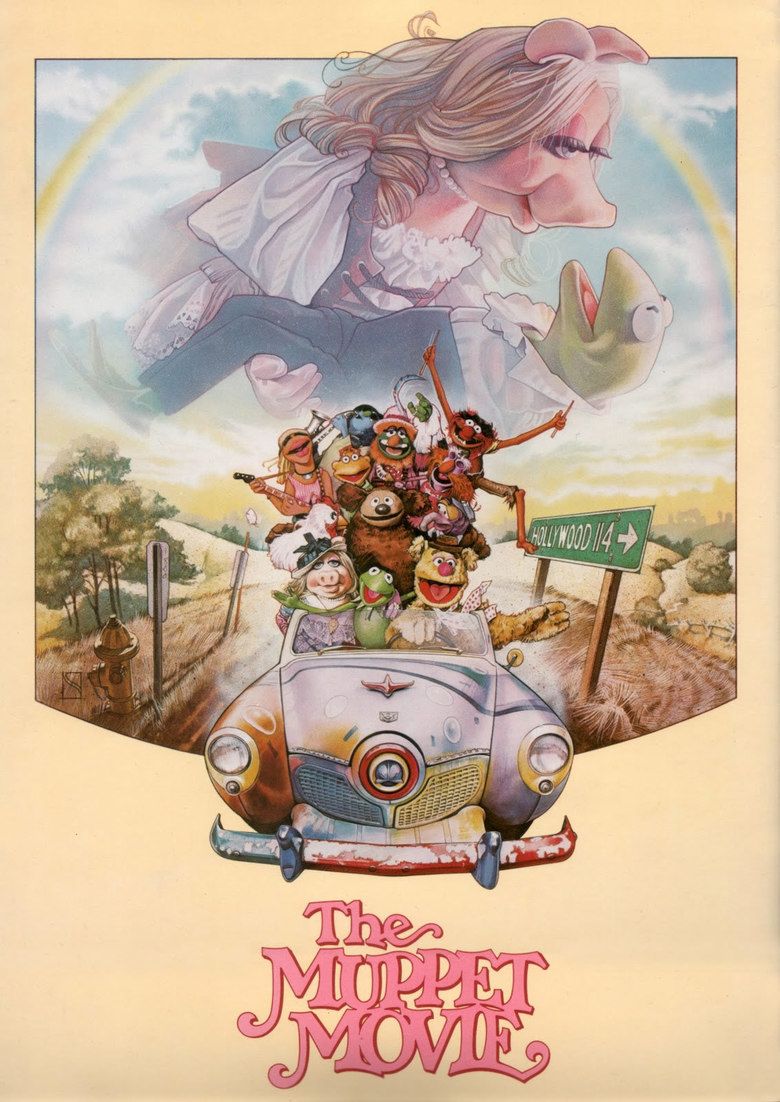 | ||||||||||||||||||||||||||||||||||
Release date May 31, 1979 (1979-05-31) (United Kingdom)June 22, 1979 (1979-06-22) (United States) Songs Cast (Kermit the Frog / Rowlf / Dr. Teeth / Waldorf / Doc Hopper's Men / Link Hogthrob / Swedish Chef (voice)), (Miss Piggy / Fozzie Bear / Animal / Sam the Eagle / Doc Hopper's Men / Marvin Suggs (uncredited) / Swedish Chef (hands) (uncredited) / Motorcycle Guy (uncredited) (voice)), (Floyd Pepper / Robin the Frog / Crazy Harry / Lew Zealand / Camilla / Dr. Bunsen Honeydew (assistant) (uncredited) (voice)), (Scooter / Statler / Janice / Sweetums / Beaker / Fozzie Bear (assistant) (voice)), (The Great Gonzo / Dr. Bunsen Honeydew / Zoot / Doglion / Iraqian in El Sleezo Cafe / Pig (voice)), (Doc Hopper) Similar movies Grease , The Muppets Take Manhattan , Nunsense 3: The Jamboree , Sister Act , The Phantom of the Opera , The Producers Tagline More entertaining than humanly possible. | ||||||||||||||||||||||||||||||||||
The Muppet Movie is a 1979 musical road comedy film and the first theatrical film featuring the Muppets. Directed by James Frawley and produced by Jim Henson, the film's screenplay was conceived by The Muppet Show writers Jerry Juhl and Jack Burns. An American and British venture produced by Henson Associates and ITC Entertainment between the first half and the second half of The Muppet Show's third season, the film depicts Kermit the Frog as he embarks on a cross-country trip to Hollywood, California. Along the way, he encounters several of the Muppets—who all share the same ambition of finding success in professional show business—while being pursued by Doc Hopper, an evil restaurateur with intentions of employing Kermit as a spokesperson for his frog legs business.
Contents
- The muppet movie 1979 13 40 14 15 1080p
- Plot
- Cast
- Muppet performers
- Cameo guest stars
- Production
- Style
- Prop vehicles
- Music
- Box office
- Critical reception
- Home media
- References
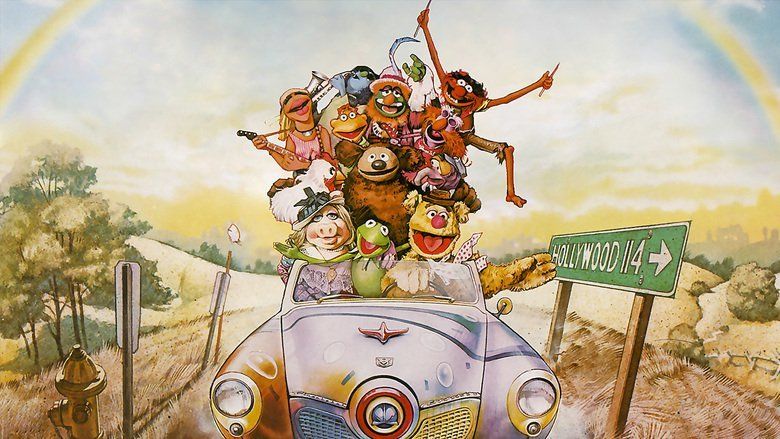
Notable for its surreal humour, meta-references and prolific use of cameos, The Muppet Movie was released in the United Kingdom on May 31, 1979 and in the United States on June 22, 1979, and received critical praise; including two Academy Award nominations for Paul Williams and Kenneth Ascher's musical score and their song, "The Rainbow Connection". In 2009, the film was deemed "culturally, historically, or aesthetically significant" by the Library of Congress and selected for preservation in the National Film Registry.
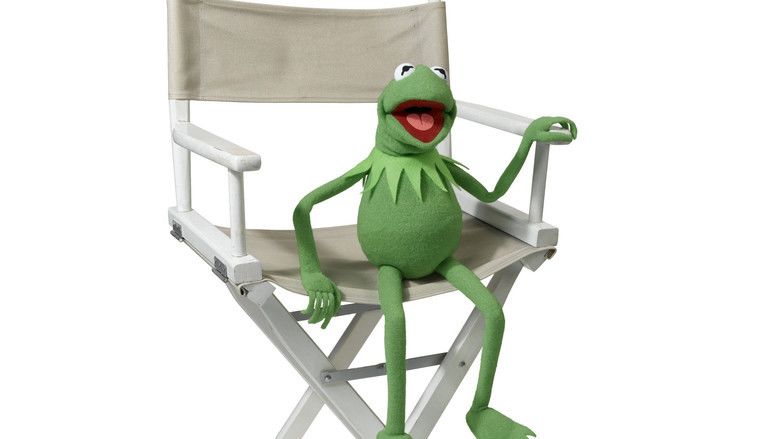
The success of The Muppet Movie spawned several sequels, none of which existed in the same continuity: The Great Muppet Caper (1981), The Muppets Take Manhattan (1984), The Muppet Christmas Carol (1992), Muppet Treasure Island (1996) and Muppets from Space (1999). In 2002, the film series was given a prequel with Kermit's Swamp Years. In 2011, the film series was rebooted with The Muppets and followed by Muppets Most Wanted in 2014. However, the latter acknowledges itself as the seventh sequel to The Muppet Movie.
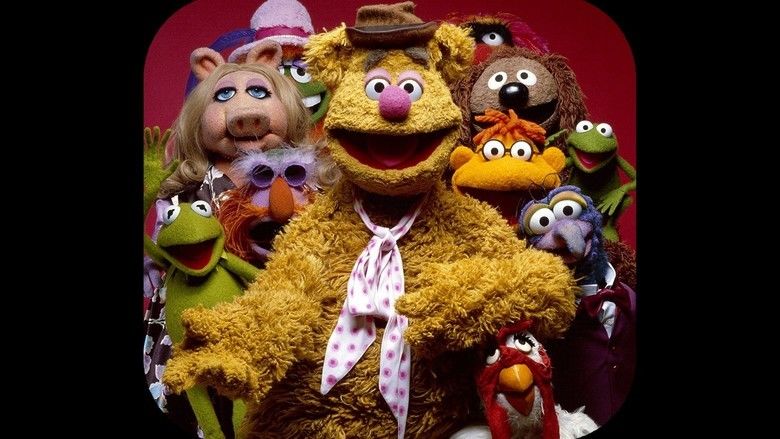
The muppet movie 1979 13 40 14 15 1080p
Plot
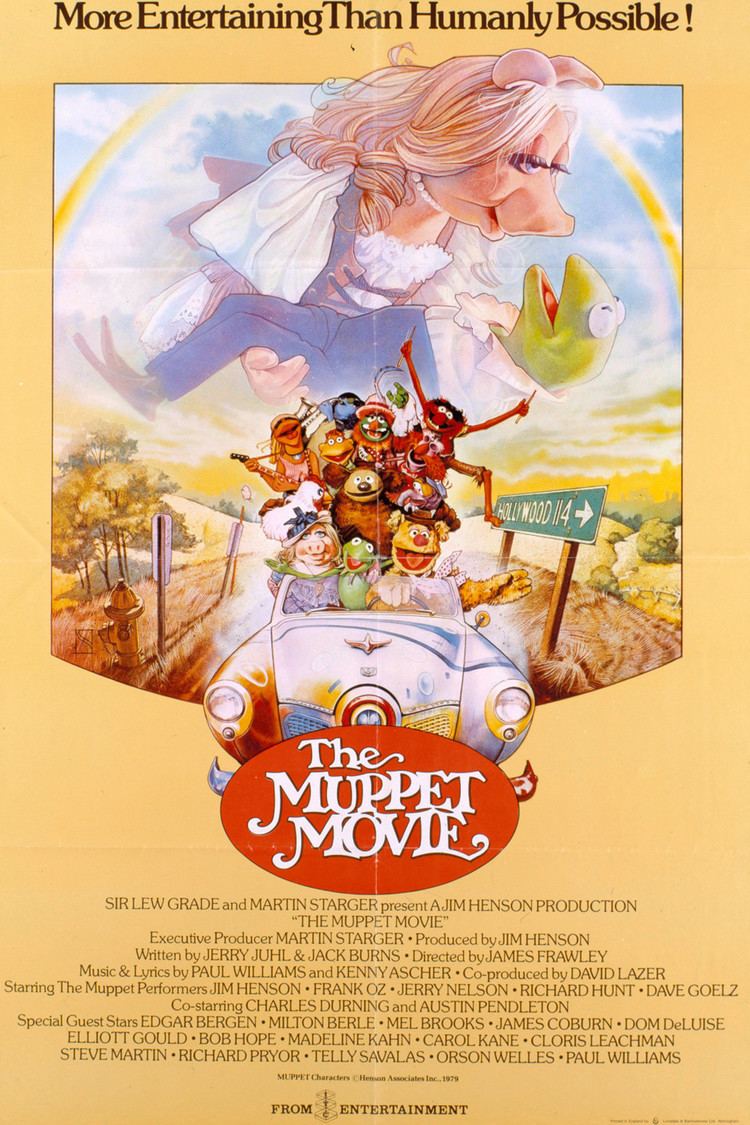
The Muppets have gathered in a theatre, in a Hollywood film studio, to screen their new biographical film, The Muppet Movie.

In the film-within-a-film, Kermit the Frog enjoys a relaxing afternoon in a Florida swamp, strumming his banjo and singing "The Rainbow Connection", when he is approached by Bernie (Dom DeLuise), a Hollywood talent agent who encourages Kermit to pursue a career in show business. Inspired by the idea of "making millions of people happy", Kermit sets off on a cross-country trip to Los Angeles, but is soon pursued by entrepreneur Doc Hopper (Charles Durning) and his shy assistant Max (Austin Pendleton) in an attempt to convince Kermit to be the new spokesman of Hopper's struggling French-fried frog legs restaurant franchise, to Kermit's horror. As Kermit continuously declines his offers, Hopper resorts to increasingly vicious means of persuasion.
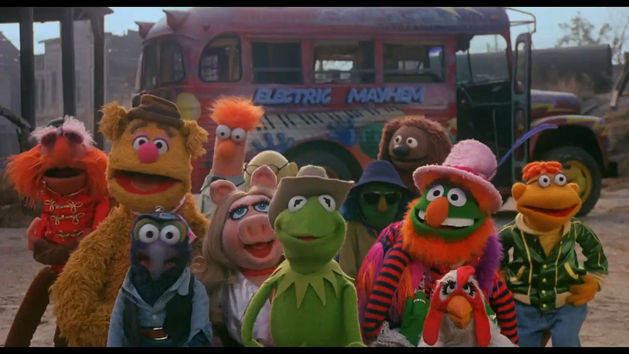
Meeting Fozzie Bear, who works as a hapless comedian in the El Sleezo Cafe, Kermit invites Fozzie to accompany him. The two set out in a 1951 Studebaker loaned to Fozzie by his hibernating uncle. The duo’s journey includes misadventures which introduce them to a variety of eccentric human and Muppet characters, including Dr. Teeth and the Electric Mayhem and their manager Scooter, who receives a copy of the script from the pair (one of a number of self-references) at an old Presbyterian church; Gonzo, who works as a plumber, and his girlfriend Camilla the Chicken; Sweetums, who runs after them after they mistakenly think that he has turned them down at a used car lot; and the immediately love-stricken Miss Piggy at a fair.
While Kermit and Miss Piggy form a relationship over dinner that night, Doc Hopper and Max kidnap Miss Piggy and use her as bait to lure Kermit into a trap. Using an electronic cerebrectomy device, scientist Professor Krassman (Mel Brooks) decides to brainwash Kermit in an attempt to force Kermit to perform in Doc’s commercials until an infuriated Miss Piggy knocks out Doc Hopper's henchmen and causes the scientist to be brainwashed by his own device. After receiving a job offer, however, she promptly abandons a devastated Kermit.
After an incident in the theater where the projector briefly breaks down, with film tangled around the Swedish Chef, who was the projectionist, which causes Animal (a member of the Electric Mayhem) to throw a wild temper tantrum and rip off a chunk of his own seat cushion, the film starts up again. Having been joined by Rowlf the Dog and reunited with Miss Piggy, the Muppets continue their journey to Hollywood. Fozzie's 1946 Ford Woodie station wagon trade-in breaks down in the New Mexico desert. During a campfire that night, the group sadly considers that they may miss the audition the next day, and Kermit wanders off, ashamed of himself for seemingly bringing his friends on a fruitless journey. Upon consulting a more optimistic vision of himself, Kermit remembers that it was not just his friends' belief in the dream that brought them this far, but also his own faith in himself. Reinvigorated, he returns to camp to find that the Electric Mayhem and Scooter have read the script in advance, and arrived to help them the rest of the way.
Just as it seems they are finally on their way, the group is warned by Max that Doc Hopper has hired an assassin named Snake Walker to kill Kermit. Kermit decides he will not be hunted down by a bully any longer and proposes a Western-style showdown in a nearby ghost town occupied by Dr. Bunsen Honeydew and his assistant Beaker, who invent materials that have yet to be tested. While confronting Hopper, Kermit explains his motivations, attempting to appeal to Hopper’s own hopes and dreams, but Hopper is unmoved and orders his henchmen to kill him and all his friends. They are saved only when one of Dr. Bunsen's inventions, "insta-grow" pills, temporarily turns Animal into a giant, causing Hopper and his men to flee while Max turns around, laughs gleefully and waves his hat at the Muppets.
The Muppets proceed to Hollywood, and after getting by his secretary, Miss Tracy (Cloris Leachman), via causing her allergic reactions to their dander and fur, are hired by producer and studio executive Lew Lord (Orson Welles). The Muppets attempt to make their first movie involving a surreal pastiche of their experiences. The first take goes awry when Gonzo, holding pastiche versions of the balloons he flew away on earlier, crashes into the rainbow, breaking it in half and sending it falling onto the rest of the set, bringing it down as well, then Crazy Harry pulls two levers in the control room, which overloads the electricity circuits and causes enough of an explosion to blow a hole in the roof of the studio. However, in their stunned silence of the whole chain of events, a rainbow suddenly shines through the hole into the studio right onto the Muppets. The Muppets, joined by the characters from The Muppet Show, Sesame Street, Emmet Otter's Jug-Band Christmas, and the "Land of Gorch" segment of Saturday Night Live, sing the final verses of "The Rainbow Connection".
As the screening ends, Sweetums jumps through the theater's screen, having finally caught up with the other Muppets.
Cast
Muppet performers
Frank Oz appears in a cameo as a biker who beats up Fozzie Bear while Steve Whitmire appears as a man in the Bogen County Fair. Also, director Tim Burton is one of the puppeteers in the final shot of the film. John Landis is also in the final shot, performing Grover. Landis and Burton were both uncredited.
Cameo guest stars
Production
The main obstacle the filmmakers were faced with during the development of The Muppet Movie was whether the Muppets would transition seamlessly from television to film. In 1978, director James Frawley, Jim Henson, and Frank Oz filmed several camera tests outside London to test how the characters would appear in real-world locations.
To perform Kermit static on a log, Henson squeezed into a specially designed metal container complete with an air hose (to breathe), a rubber sleeve which came out of the top to perform Kermit and a monitor to see his performance, and placed himself under the water, log, and the Kermit puppet. He was also assisted in this operation by Kathryn Mullen and Steve Whitmire. This scene took five days to film.
Before this, no film had a hand puppet act with its entire body appearing on-screen. That is, hand puppets were only seen from the waist up, and it became a major plot point to show Kermit with legs. To have Kermit ride a bicycle in a full-body shot, a Kermit puppet with legs was posed onto the seat and his legs and arms were attached to the pedals and handlebars. An overhead crane with a marionette system held the bicycle through strong strings invisible to the camera, guiding the bicycle forward. The crane and system was out of the camera's frame of vision.
Other shots required Muppets standing and acting in a full-body shot. Specially-made, remote-controlled puppets were placed on the set and controlled by puppeteers out of the frame. A dancing Kermit and Fozzie Bear were operated by Henson and Frank Oz in front of a blue screen, and were composited onto a separate reel of the stage. Both of these effects and the bicycle effect would be used again, and refined, in subsequent Muppet films.
Austin Pendleton recalled that the film was shot on "a very unhappy set, because Jim [Frawley] was very unhappy directing that movie. And I noticed that was the only time the Muppet people used an outside person to direct a Muppet movie. They never did that again. After that, it was either Jim Henson or Frank Oz. And I would have liked to have been in one of those, because those sets were very harmonious. But this was not." Filming locations included Albuquerque, New Mexico.
The closing reprise of "Rainbow Connection" featured a crowd of more than 250 Muppet characters—virtually every Muppet that had been created up to that point in time. According to Henson Archivist Karen Falk: "137 puppeteers were enlisted from the Puppeteers of America (along with the regular Muppet performers) to perform every Muppet extant. Prior to the day-long filming of the shot, Jim Henson gave the enthusiastic participants a lesson in the art of cinematic puppetry. Amazingly, it did take just one day." The Muppet Show Fan Club newsletter answered the question of "How did they do it?" The response was "There are 250 puppets in the last shot of the film, and they're all moving. How? 150 puppeteers in a 6' deep, 17' wide pit, that's how. They were recruited through the Los Angeles Guild of The Puppeteers of America and almost every puppeteer west of the Rockies reported for pit duty." The film is dedicated to ventriloquist Edgar Bergen who appears in the movie in a cameo role and died during production in September 1978.
Style
The Muppet Movie uses meta-references as a source of humor, as characters occasionally break the fourth wall to address the audience or comment on their real-life circumstances. In one scene, Kermit and Fozzie encounter Big Bird on the road, offering him a lift to Hollywood, but he declines, heading to New York City to break into public television, referencing the character's role in Sesame Street.
In a particularly meta-fictional plot twist, Kermit and Fozzie actually give the screenplay to Dr. Teeth, who later uses it to find and rescue them after they have been stranded in the desert.
Prop vehicles
Several classic cars were specially selected by Henson for appearances in the film. The most prominent were a pair of 1951 Studebaker Commander Coupes driven by Fozzie Bear in the film. One car was painted but unmodified and driven by a person in the front seat. It was used for long, traveling shots. The second car was driven by a person in the trunk, who viewed the road through a TV set. The television received its image from a camera located in the center nose of the car's front grille. This made it possible for Frank Oz to perform Fozzie Bear in the front seat, and have the character seemingly drive the car in close-up shots. This car is now on display at the Studebaker Museum in South Bend, Indiana.
Doc Hopper is chauffeured throughout the movie by Max in a 1959 Cadillac Fleetwood 75 Limousine.
The final car driven by the Muppets is a 1946 Ford Woodie station wagon, famous for its wood panel siding and a valuable collectible.
Music
The film's music was written by Kenneth Ascher and Paul Williams. Regarding the music's composition, Williams said; "Jim Henson gave you more [creative] freedom than anybody I've ever worked with in my life. I said, 'You want to hear the songs as we're writing them?' He said, 'No. I'll hear them in the studio. I know I'm gonna love them.' You just don't get that kind of freedom on a project these days."
"Movin' Right Along", "Never Before, Never Again", and "I Hope That Somethin' Better Comes Along" were shortened in the film, compared to their soundtrack versions, for continuity purposes. The latter, a duet between Rowlf and Kermit, contained references that the studio considered too mature for children, although the song appeared complete in the British theatrical and home video debut versions. In "Finale: The Magic Store", a line performed by Kermit in the film is sung by Fozzie on the soundtrack recording.
Box office
The film proved to be a huge hit at the box office during the summer of 1979 and ended up grossing $76,657,000 domestically (adjusted for inflation, this would equal $265,703,546 in 2016 dollars), making it the seventh highest-grossing film of 1979 and also, the second highest-grossing Muppet film after the release of The Muppets in 2011. The success of the film gave Jim Henson Productions an opportunity to release more Muppet productions theatrically.
The film's successful theatrical release encouraged Lew Grade into furthering his own film distribution company, which later backfired with the massive box office failures of Can't Stop the Music (from EMI) and Raise the Titanic (from ITC), both released by Associated Film Distribution just a year later.
Critical reception
The Muppet Movie received positive reviews. The film holds an 87% approval rating on aggregate review site Rotten Tomatoes with an average score of 8/10, based on 47 reviews. The site's consensus says "The Muppet Movie, the big-screen debut of Jim Henson's plush creations, is smart, lighthearted, and fun for all ages."
Roger Ebert of The Chicago Sun-Times gave the film three-and-a-half out of four stars. In his favorable review, he was fascinated that "The Muppet Movie not only stars the Muppets but, for the first time, shows us their feet." Vincent Canby of The New York Times offered equal praise, stating that the film "demonstrates once again that there's always room in movies for unbridled amiability when it's governed by intelligence and wit."
In 2009, it was named to the National Film Registry by the Library of Congress for being “culturally, historically or aesthetically” significant and will be preserved for all time.
Home media
The Muppet Movie was the first film from ITC Entertainment to be released on home video when Magnetic Video issued it in January 1980, having acquired the video rights to ITC's films. It was reissued a few times more by CBS/Fox Video before it was released by Jim Henson Video in 1993. The movie was reissued on VHS by Columbia Tristar Home Video and Jim Henson Home Entertainment in June, 1999. The film's first DVD release was from Sony Pictures Home Entertainment and Jim Henson Home Entertainment on June 5, 2001. It was re-released by Walt Disney Home Entertainment on DVD and reissued as a Walt Disney Pictures release on November 29, 2005 as Kermit's 50th Anniversary Edition.
Walt Disney Studios Home Entertainment released The Muppet Movie as the Nearly 35th Anniversary Edition on Blu-ray Disc and DVD on August 13, 2013.
References
The Muppet Movie WikipediaThe Muppet Movie IMDbThe Muppet Movie Rotten TomatoesThe Muppet Movie Roger EbertThe Muppet Movie MetacriticThe Muppet Movie themoviedb.org
